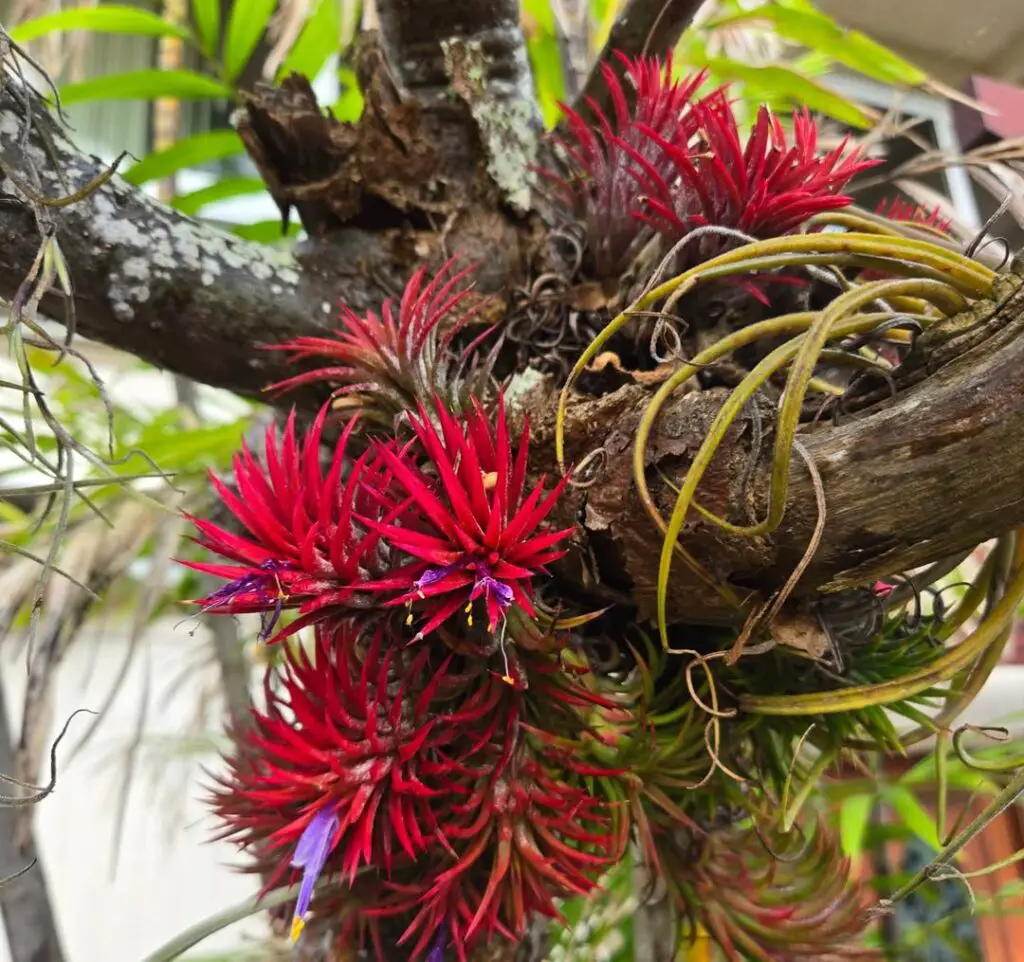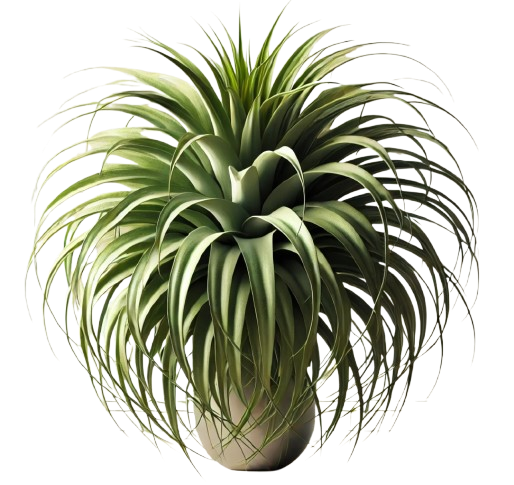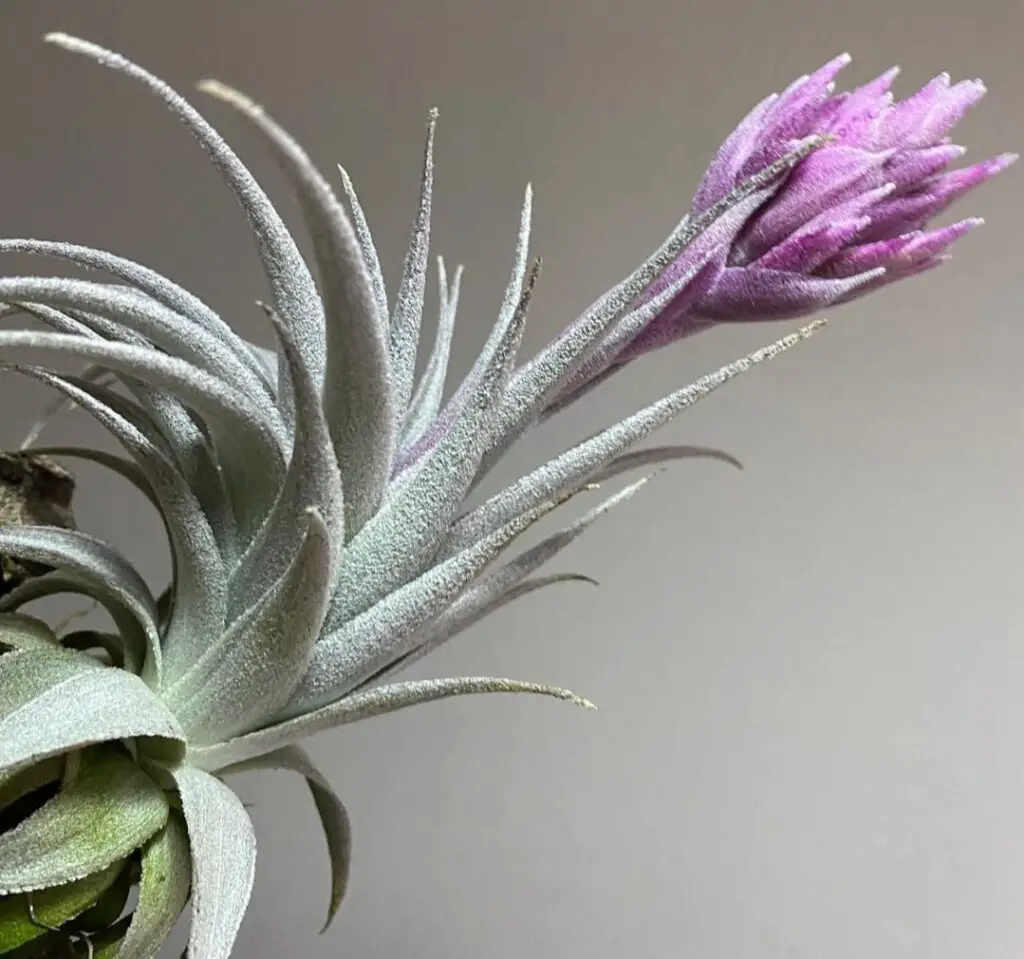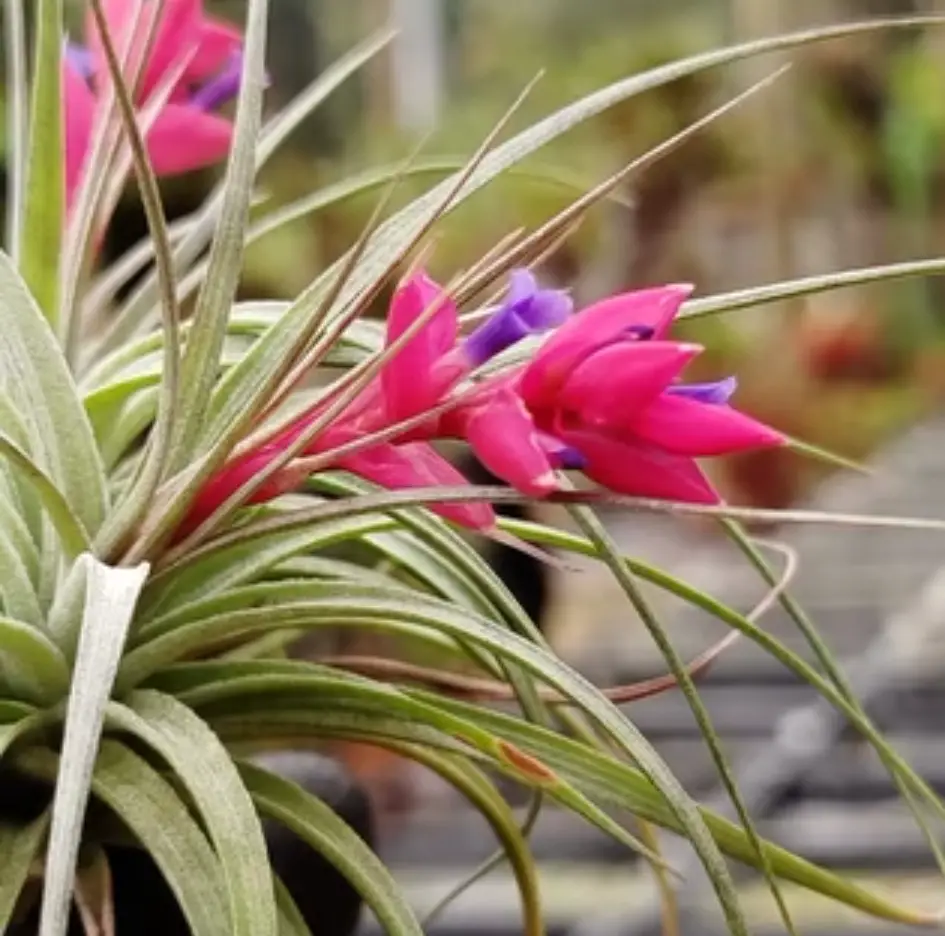Tillandsia ionantha, one of the most captivating air plants, is a true gem among plant lovers. With its ability to blush vibrant colors and produce stunning purple blooms, it’s no surprise it’s a favorite in both minimalist decor and lush plant walls. Whether you’re new to air plants or a seasoned collector, these 20 expert tips will guide you in helping your Tillandsia ionantha flourish year-round.

- 1 🌿 1. Choose Healthy Plants
- 2 ☀️ 2. Provide Bright, Indirect Light
- 3 💦 3. Master the Watering Routine
- 4 🌬️ 4. Airflow is Everything
- 5 🌡️ 5. Keep It Cozy
- 6 🧼 6. Clean Them Occasionally
- 7 🌸 7. Watch for the Blush
- 8 🌼 8. Appreciate the Bloom
- 9 👶 9. Propagate with Pups
- 10 🪴 10. Display Creatively
- 11 🔄 11. Rotate for Even Light
- 12 🧴 12. Use Filtered or Rainwater
- 13 🚫 13. Avoid Soil
- 14 🌧️ 14. Humidity Helps
- 15 📍 15. Don’t Overcrowd
- 16 🧪 16. Fertilize Occasionally
- 17 🌑 17. Rest at Night
- 18 🕵️ 18. Check for Pests
- 19 📚 19. Learn the Varieties
- 20 🧘 20. Be Patient & Observe
- 21 🌟 Final Thoughts
🌿 1. Choose Healthy Plants
To begin your voyage, pick a Tillandsia ionantha that is solid and bright. Steer clear of plants with soft areas, drab colouring, or brown leaf tips since these could indicate poor health or inadequate maintenance. A robust air plant should have uniformly coloured leaves, typically green with pink or red undertones.
☀️ 2. Provide Bright, Indirect Light
These tropical beauties love light—but not too much of it. Your ionantha should be placed close to a bright window that receives filtered sunlight. Direct sun can cause the leaves to dry out or burn, especially during summer afternoons. Artificial grow lights also work great if natural light is limited.
💦 3. Master the Watering Routine
Once a week, immerse your air plant in water at room temperature for 20 to 30 minutes. Add a little misting in between soakings if your climate is especially dry. To prevent rot, make sure to shake off any extra water and allow the plant to dry fully within four hours.
🌬️ 4. Airflow is Everything
Just as vital as water and light is air circulation.Make sure your plant’s location gets a gentle breeze, whether from an open window, fan, or natural airflow. Avoid placing it in enclosed terrariums or glass containers unless they are well-ventilated.
🌡️ 5. Keep It Cozy
In order to replicate the conditions of Central America, where it is found naturally, Tillandsia ionantha prefers warm settings. Temperatures between 50°F and 90°F (10°C and 32°C) are ideal. Especially in the winter, shield your plant from cold windows, drafts from the air conditioner, and frost.
🧼 6. Clean Them Occasionally
Over time, dust and water spots can accumulate on your plant’s leaves. Rinse your ionantha under gentle, lukewarm running water every few weeks to keep it fresh and functional. Clean leaves absorb air and moisture more efficiently, improving the plant’s overall health.
🌸 7. Watch for the Blush
One of the most exciting things about this plant is its color transformation. When it’s getting ready to bloom, the leaves will blush a bright red or pink, especially near the center. This is not only beautiful to look at but also a good sign that your care routine is working.
🌼 8. Appreciate the Bloom
Tillandsia ionantha typically blooms once in its lifetime, sending out a striking purple or blue flower. Though the bloom may last only a few days to a week, it’s a spectacular moment. Take time to enjoy it—it’s the plant’s way of saying thank you.
👶 9. Propagate with Pups
After blooming, the mother plant will produce “pups,” or baby plants, from its base. You can leave these to form a clump or separate them once they’re about one-third the size of the parent. This is how your collection grows—and it’s completely free!
🪴 10. Display Creatively
Air plants don’t need soil, which opens up endless design possibilities. Mount them on driftwood, tuck them into seashells, or place them on stones and in glass orbs. Just remember: beauty shouldn’t come at the cost of function. Prioritize airflow and dryness over aesthetics.
🔄 11. Rotate for Even Light
Turn your plant once or twice a week to ensure it gets light from all sides. This can improve the plant’s colour and general look in addition to encouraging symmetrical development. It’s a straightforward practice with significant visual benefits.
🧴 12. Use Filtered or Rainwater
Over time, minerals, fluoride, and chlorine found in tap water can damage sensitive air plants. Use distilled water, filtered water, or collected rainwater whenever you can. Better absorption and healthier foliage will be the results of your efforts.
🚫 13. Avoid Soil
Unlike traditional plants, Tillandsia ionantha is epiphytic—it gets nutrients from the air, not soil. Planting it in soil will smother its base and likely lead to rot. Keep it high and dry, literally.
🌧️ 14. Humidity Helps
The optimal humidity range is between 50% and 70%. Use a humidifier close by or mist your plants more often if you live in a dry area or if the winter months are when heaters dry out the air. Just make sure that a few hours after misting, they still dry out.
📍 15. Don’t Overcrowd
Give your ionantha breathing space. Crowding multiple plants together can lead to poor airflow, which increases the risk of rot, mold, or fungus. A little spacing goes a long way in keeping them healthy.
🧪 16. Fertilize Occasionally
While not necessary, occasional feeding boosts growth and blooming potential. Use a bromeliad or air plant-specific fertilizer monthly, diluted to a quarter of the recommended strength. Refrain from overfertilizing as this may harm the plant.
🌑 17. Rest at Night
Tillandsias perform a type of photosynthesis called CAM, which means they “breathe” at night. Watering in the evening can disrupt this process and cause moisture to sit overnight, leading to rot. Morning watering is always safest.
🕵️ 18. Check for Pests
Though rare, air plants can attract pests like mealybugs or scale, especially if stressed. Inspect regularly and isolate any affected plants. You can treat infestations with a gentle rinse in diluted neem oil or soapy water.
📚 19. Learn the Varieties
Tillandsia ionantha comes in a variety of beautiful varieties, each with an own personality. Different colours, forms, and growth patterns are offered by varieties such as “Fuego,” “Rubra,” “Scaposa,” and “Guatemala.” Investigating these gives your collection more excitement.
🧘 20. Be Patient & Observe
Growth is slow but steady. It can take months for pups to mature or a plant to blush and bloom. The secret to success is observation—watch how your plant reacts to its environment and adjust care accordingly. Over time, you’ll develop a natural rhythm with your ionantha.
🌟 Final Thoughts
Tillandsia ionantha is proof that a low-maintenance plant can still be full of life, color, and personality. With the right care, this tropical air plant becomes not just decor, but a dynamic, ever-evolving living piece of art. Whether you’re keeping a single ionantha or growing a clump of vibrant pups, these expert tips will help ensure your plant thrives for years to come.




